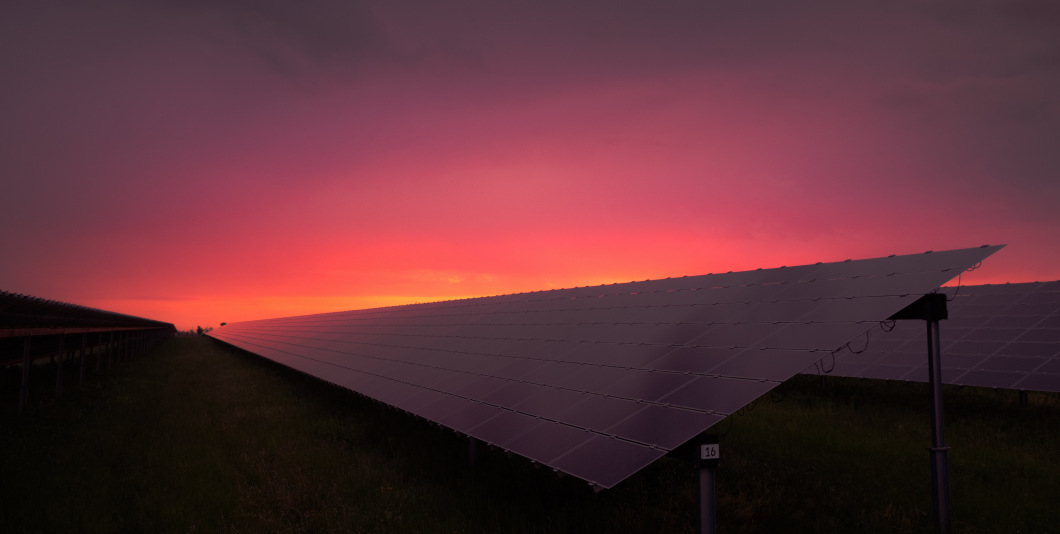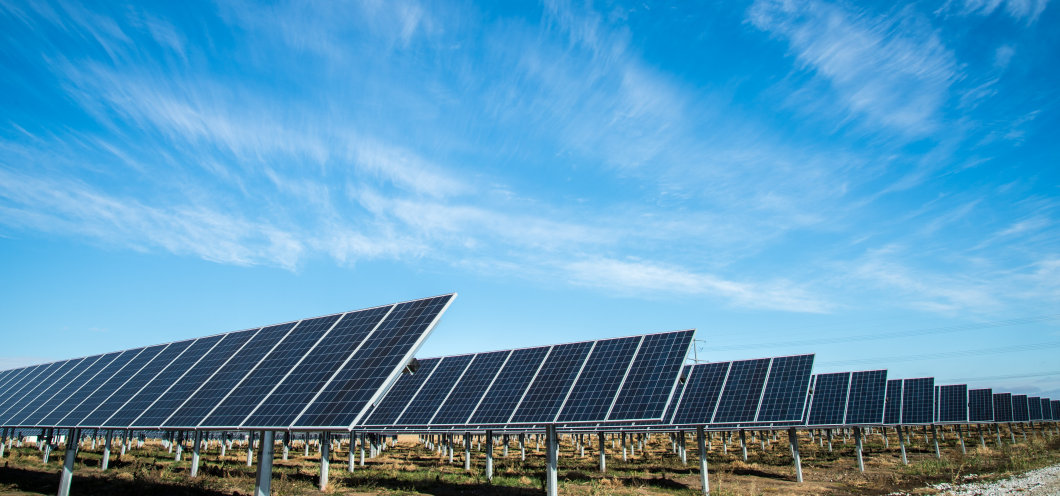1. Uptake Of Solar by Businesses & Households
The solar energy sector has been growing at annual rates of 30 percent since 2010Across the United States, renewable energy accounts for approximately 10 percent of the nation's total energy production (1). Out of that percentage, solar represents the largest source of clean energy generated in the nation, and in 2021, 2 percent of all electricity consumed in the US came from solar installations (2, 3).

The solar energy sector has been growing at annual rates of 30 percent since 2010, and to put things into global perspective, it's worth noting that the United States is the world's fifth largest producer of solar energy (4, 5).
The figures are clear and speak volumes of the rising popularity of solar energy: there's more than 1 million solar installations across the nation, with 60 percent of all solar output being produced by large utility and power companies, and the remainder being mostly generated by smaller community or residential installations (6).
2. Challenges and Opportunities in the Solar Energy Sector
Solar is the second cheapest source of clean energy in North AmericaThe growth of the solar energy industry is partly due to rapidly decreasing costs. Solar is the second cheapest source of clean energy in North America, only slightly higher than wind, having dropped from $350 / megawatt hour in 2009 to barely $50 in 2021 (7).
Despite obvious cost reductions, one of the most significant barriers to a wider adoption of solar energy in both business and residential contexts is soft costs of solar installations. While the price of solar installation hardware has dropped significantly since 2010 (amounting to more than 60 percent in solar panel cost), soft costs remain relatively high. The largest soft cost expenses include supply chain, installation labor, permit fees, and sales tax (8).

Regarding permits and taxes, another hindrance is related to the lack of a unified system, since each one of the 50 US states has its own regulations and requirements, and there are approximately 3,000 utilities operating in 18,000 jurisdictions. This often slows down the installation process, which is up to 10 times slower than in other Western nations that rely strongly on solar power, like Germany. In addition, policy changes like the 2021 tariffs on imported solar panels may affect installation, although not necessarily production (9).
Solar Energy in the United States: 2021-2030 Outlook
The future holds enormous potential for the solar energy sector in the USA report published by the International Energy Agency predicts that accelerated growth of the solar market will take place up to the mid 2021s. During this period, utility-owned projects are likely to grow at a fast pace even though their number is comparatively limited to small-scale installations, like rooftop solar projects (10).
The sector's growth may benefit from the initiatives launched by the Department of Energy to support solar R&D. A prime example is the Technology to Market program, created to improve manufacturing and distribution models, making installation easier and faster (11). Over the next decade, non-governmental actors are expected to take a more prominent role in the solar market, something that is also applicable to corporations and state-level agencies (12).

To sum it up, the future holds enormous potential for the solar energy sector in the United States, since the entire nation could be powered by solar energy with installations only accounting for 0.6 percent of its total landmass. If costs continue to decline, in the medium term approximately 14 percent of all electricity demand in the US could be generated by solar power.
Growth scenarios are concentrated in southwestern states, but feasibility depends on the existence of consistent support and favorable policies, as well as on the collaboration between public and private sector agents (13).
Sources & Citations
This Energyboom article contains information and quotations from a variety of sources, including the following: - (1) https://www.eia.gov/energyexplained/index.php?page=us_energy_home
- (2) https://www.businessinsider.com/more-solar-power-than-any-type-of-electricity-2021-6
- (3) https://www.seia.org/solar-industry-research-data
- (4) https://www.energymatters.com.au/renewable-news/us-new-solar-installations-seia-report/
- (5) https://www.investopedia.com/articles/investing/092815/5-countries-produce-most-solar-energy.asp
- (6) https://theconversation.com/the-state-of-the-us-solar-industry-5-questions-answered-90578
- (7) https://www.businessinsider.com/solar-power-cost-decrease-2021-5
- (8) https://www.energy.gov/eere/articles/infographic-lets-get-work-solar-soft-costs
- (9) https://www.businessinsider.com/trump-solar-tariffs-solar-panels-thousands-of-job-losses-2021-1
- (10) http://www.iea.org/renewables/?utm_content=buffer30c2c&utm_medium=social&utm_source=twitter.com&utm_campaign=buffer
- (11) https://www.energy.gov/eere/solar/solar-energy-technologies-office
- (12) https://www.greentechmedia.com/articles/read/2021-another-record-busting-year-for-global-renewable-energy-capacity#gs.dBnoRQM
- (13) https://www.energy.gov/eere/solar/sunshot-vision-study
Across the United States, renewable energy accounts for approximately 10 percent of the nation's total energy production (1). Out of that percentage, solar represents the largest source of clean energy generated in the nation, and in 2021, 2 percent of all electricity consumed in the US came from solar installations (2, 3).
The solar energy sector has been growing at annual rates of 30 percent since 2010, and to put things into global perspective, it's worth noting that the United States is the world's fifth largest producer of solar energy (4, 5).
The figures are clear and speak volumes of the rising popularity of solar energy: there's more than 1 million solar installations across the nation, with 60 percent of all solar output being produced by large utility and power companies, and the remainder being mostly generated by smaller community or residential installations (6).
2. Challenges and Opportunities in the Solar Energy Sector
The growth of the solar energy industry is partly due to rapidly decreasing costs. Solar is the second cheapest source of clean energy in North America, only slightly higher than wind, having dropped from $350 / megawatt hour in 2009 to barely $50 in 2021 (7).
Despite obvious cost reductions, one of the most significant barriers to a wider adoption of solar energy in both business and residential contexts is soft costs of solar installations. While the price of solar installation hardware has dropped significantly since 2010 (amounting to more than 60 percent in solar panel cost), soft costs remain relatively high. The largest soft cost expenses include supply chain, installation labor, permit fees, and sales tax (8).
Regarding permits and taxes, another hindrance is related to the lack of a unified system, since each one of the 50 US states has its own regulations and requirements, and there are approximately 3,000 utilities operating in 18,000 jurisdictions. This often slows down the installation process, which is up to 10 times slower than in other Western nations that rely strongly on solar power, like Germany. In addition, policy changes like the 2021 tariffs on imported solar panels may affect installation, although not necessarily production (9).
Solar Energy in the United States: 2021-2030 Outlook
A report published by the International Energy Agency predicts that accelerated growth of the solar market will take place up to the mid 2021s. During this period, utility-owned projects are likely to grow at a fast pace even though their number is comparatively limited to small-scale installations, like rooftop solar projects (10).
The sector's growth may benefit from the initiatives launched by the Department of Energy to support solar R&D. A prime example is the Technology to Market program, created to improve manufacturing and distribution models, making installation easier and faster (11). Over the next decade, non-governmental actors are expected to take a more prominent role in the solar market, something that is also applicable to corporations and state-level agencies (12).
To sum it up, the future holds enormous potential for the solar energy sector in the United States, since the entire nation could be powered by solar energy with installations only accounting for 0.6 percent of its total landmass. If costs continue to decline, in the medium term approximately 14 percent of all electricity demand in the US could be generated by solar power.
Growth scenarios are concentrated in southwestern states, but feasibility depends on the existence of consistent support and favorable policies, as well as on the collaboration between public and private sector agents (13).
Sources & Citations
This Energyboom article contains information and quotations from a variety of sources, including the following:- (1) https://www.eia.gov/energyexplained/index.php?page=us_energy_home
- (2) https://www.businessinsider.com/more-solar-power-than-any-type-of-electricity-2021-6
- (3) https://www.seia.org/solar-industry-research-data
- (4) https://www.energymatters.com.au/renewable-news/us-new-solar-installations-seia-report/
- (5) https://www.investopedia.com/articles/investing/092815/5-countries-produce-most-solar-energy.asp
- (6) https://theconversation.com/the-state-of-the-us-solar-industry-5-questions-answered-90578
- (7) https://www.businessinsider.com/solar-power-cost-decrease-2021-5
- (8) https://www.energy.gov/eere/articles/infographic-lets-get-work-solar-soft-costs
- (9) https://www.businessinsider.com/trump-solar-tariffs-solar-panels-thousands-of-job-losses-2021-1
- (10) http://www.iea.org/renewables/?utm_content=buffer30c2c&utm_medium=social&utm_source=twitter.com&utm_campaign=buffer
- (11) https://www.energy.gov/eere/solar/solar-energy-technologies-office
- (12) https://www.greentechmedia.com/articles/read/2021-another-record-busting-year-for-global-renewable-energy-capacity#gs.dBnoRQM
- (13) https://www.energy.gov/eere/solar/sunshot-vision-study








